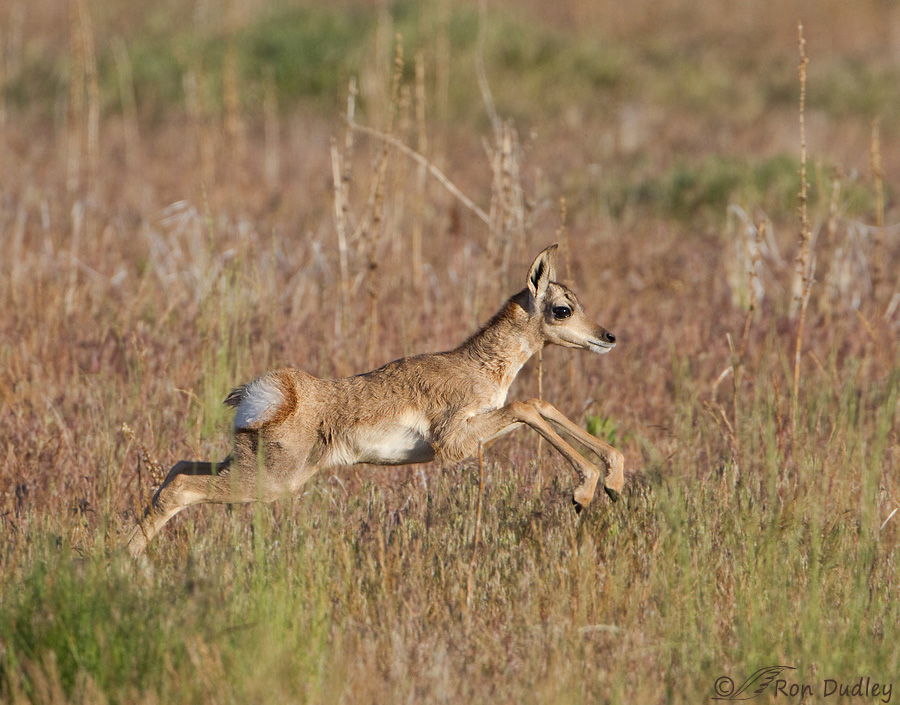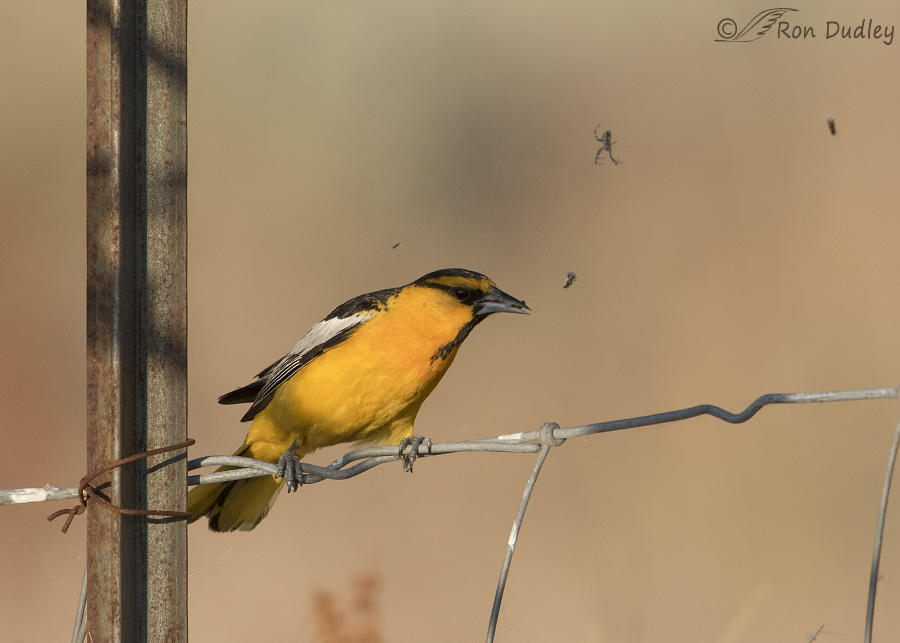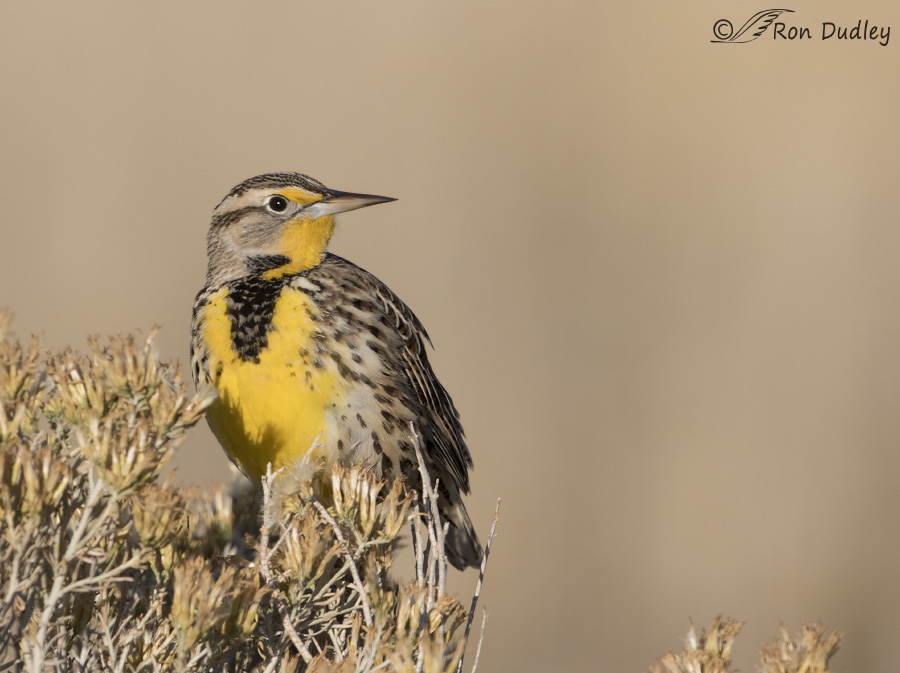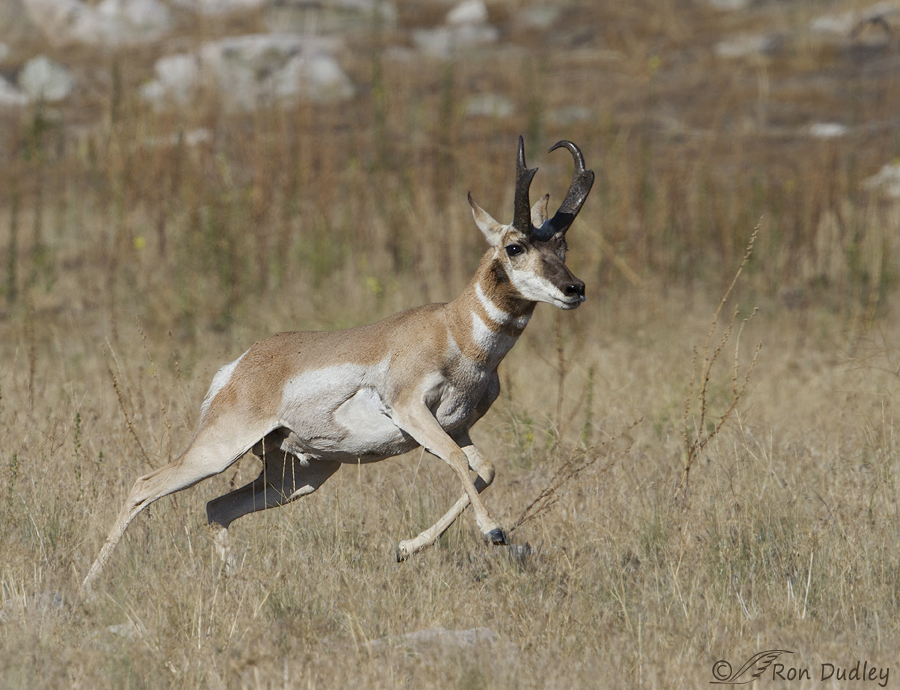Tag: antelope
Pronghorn Fawn Frolicking In The Grass
Bullock’s Oriole Stealing Food From An Unhappy Spider
Our Western Meadowlarks Are Still Singing (images and video)
Pronghorn Buck Putting On A Burst Of Speed
Mountain Plovers On Antelope Island – Yes, Here In Utah!
As I reported on my last post, Mia and I found two Mountain Plovers on Antelope Island yesterday. They’re rare in Utah and I had never seen the species before, even in my travels to Montana and Wyoming where they’re more common. It was a very exciting day.
The Trouble With Harems
Mia and I spent most of this week on a camping/photography trip to Flaming Gorge, Utah and we had some wonderful photographic opportunities with pronghorns. We camped on an isolated peninsula and it happened that a buck pronghorn was using the topography of the peninsula to help him keep control of his very large harem of females. The herd consisted of the lone buck and many females – both adults and juveniles. The male was in full rut and frantic to keep his does together and prevent several other males from running off with them. Does have varying mating strategies. Some does, called “sampling” females, will visit several males during the breeding season if allowed to do so. Others, referred to as “inciting females”, behave as sampling females until they come into estrus when they move off from the males which incites fights and aggressive competition between the males. These females always immediately mate with the winning male. Some females employ a third strategy where they join a single male and remain with him throughout estrus – these does are called “quiet” females. Canon 7D, 1/800, f/5.6, ISO 640, 500 f/4, 1.4 tc This poor buck was trying to control at least 28 females and was struggling mightily to do so. One evening we were at the bottom of a string of small hills just as the sun was setting (thus the warm, golden light in these photos). The buck and his females were strung out on the crest of several of the hills and one of the does was giving him a hard time by…
Antelope Island Potpourri
My last few visits to Antelope Island have yielded a mixed bag of bird and mammal photos that I enjoy so I thought I’d share a little of what it’s like to experience the wildlife out there during late spring. Canon 7D, 1/2000, f/6.3, ISO 500, 500 f/4, 1.4 tc This take-off pose is one I’ve been after for some time so I was glad to get it from this Loggerhead Shrike, despite the foreground twig in front of the right wing-tip. Canon 7D, 1/2500, f/6.3, ISO 500, 500 f/4, 1.4 tc I believe this to be the same bird as in the previous photo. It had captured what I think was one of the Ichneumon wasps and toyed with it a while before dropping it. I was happy to get the wasp unobscured by the branches or the birds toes as it fell. The shrike watched where it fell and retrieved it. Canon 7D, 1/2000, f/6.3, ISO 640, 500 f/4, 1.4 tc There are presumably many pronghorn fawns on the island this time of year but I’ve found it difficult to get close to them or even to spot them at a distance – probably partially due to their instinctive behavior of lying low in the tall grasses much of the time. This one was in a playful mood and spent several minutes romping through the grass around its mother. Canon 7D, 1/2500, f/6.3, ISO 640, 500 f/4, 1.4 tc This is the same fawn a few minutes later, just after nursing. …
The Coyotes and the Plucky Pronghorn
Yesterday Mia and I were witness to quite the little drama on a trip to Antelope Island to photograph birds. It all started when we noticed the frantic calling of a Long-billed Curlew which flew over us several times in obvious distress. Canon 7D, 1/2500, f/6.3, ISO 640, 500 f/4, 1.4 tc At first we didn’t know what was causing all the ruckus but soon Mia spotted this coyote. A couple of minutes later we noticed a second coyote nearby. We suspect that the curlew had a nest in the vicinity and it was disturbed by the foraging coyotes. Soon both coyotes disappeared into a ravine but we hung around hoping for more flight shots of the curlew. Canon 7D, 1/1600, f/7.1, ISO 640, 500 f/4, 1.4 tc Then, almost a quarter-mile away, we spotted the coyotes again but this time a doe Pronghorn (at least I think it’s a female and not a young male) had entered the scene. There was obviously going to be a confrontation and at first I assumed that the coyotes would be the aggressors but I was quickly proven wrong. Canon 7D, 1/1600, f/7.1, ISO 640, 500 f/4, 1.4 tc This doe had pluck! After a few seconds of staring each other down the pronghorn charged the coyote on the right. Canon 7D, 1/1600, f/7.1, ISO 640, 500 f/4, 1.4 tc That coyote beat a hasty retreat but the teamwork the coyotes showed was impressive. They always stayed a short distance apart and whenever the doe would…
Antelope Island
Of the eight major islands in the Great Salt Lake, Antelope Island is the largest at 15 miles long and 4.5 miles wide. Frary Peak reaches an elevation of 6596 feet. The island has an intriguing history, interesting geology and free roaming herds of bison, bighorn sheep, mule deer and pronghorn, in addition to a variety of smaller mammal species and plentiful birds. It is one of my very favorite photography locations – especially for birds. In this blog post I will present an overview of the island and some of its wildlife. My next post will deal specifically with bird photography on the island. The north end of Antelope Island at sunrise as seen from the causeway access road There is a 7 mile long causeway road that provides the only access to the island, which is actually a peninsula when the Great Salt Lake water levels are low. It’s common to see a variety of wildlife along this causeway including coyotes sprinting at the first sight of an early morning vehicle, American Kestrels, Northern Harriers, Burrowing Owls, Common Ravens and a variety of waterfowl and shorebirds where the water comes closer to the causeway. Approaching the north end of Antelope Island As you get closer to the island the water comes right up to the causeway’s edge and typically there’s hordes of waterfowl and shorebirds very close to the road. In the photo above, several shoreline levels of ancient Lake Bonneville can be seen where wave action eroded “benches” in the sides of the…






